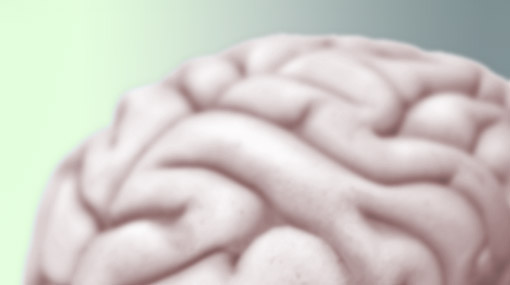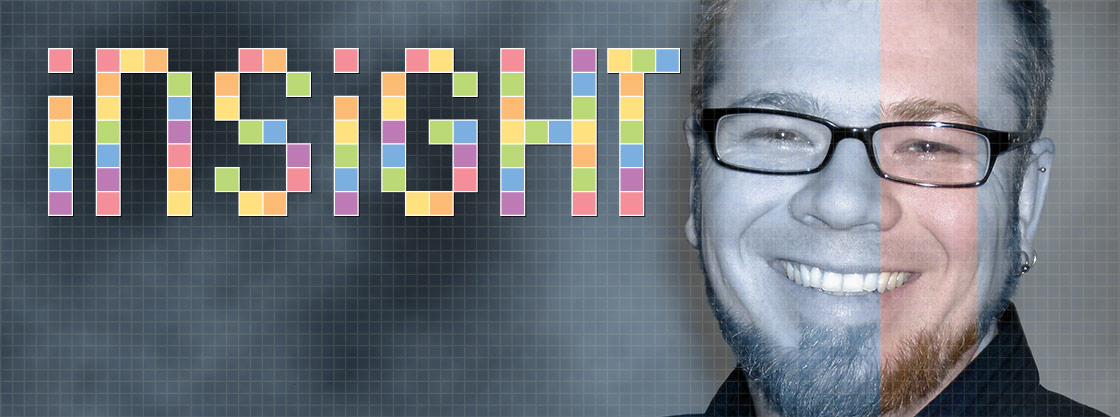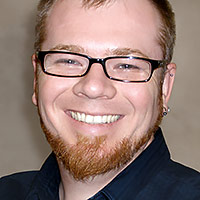This is an excerpt from Junior Skeptic 37 (published in 2010 inside Skeptic magazine Vol. 15, No. 4), which is a quick ten-page tour of the “Top Ten Busted Myths.” Junior Skeptic is written for (older) children, and does not include endnotes, though I often call out important sources in sidebars or the text of the story itself. However, I’ve included one or two citations here for your interest:

Have you heard that we only use 10 percent of our brains? Imagine what we could accomplish if we could discover how to use that other 90 percent! Could we discover an untapped potential for incredible psychic powers?
There’s only one problem: none of that is true. Humans use every part of our brains.
Everyone has heard the 10 percent myth, and many people believe it. Why wouldn’t they? We hear this fake “fact” very often in movies1 and TV. As neurologist Steven Novella explains, most people “accept this as just another amazing but true pronouncement of science without too much scrutiny.” It doesn’t occur to most people to ask, “Is this true?” or, “Why would we evolve over-sized brains if we didn’t actually use them?”

For more of Junior Skeptic‘s “Top 10 Busted Myths,” see issue 37 (published in 2010 inside Skeptic Vol. 15, No. 4).
There’s plenty more to learn about the complex human brain, but scientists have been studying it for a long time. One thing they’ve learned is that we lose specific brain functions if specific parts of the brain get damaged by disease or injury. For example, damage to a certain spot in the brain might take away a patient’s ability to speak, while leaving other abilities intact. Damage to other spots might take away a patient’s ability to remember faces, or count, or so on. Studying such specific brain injuries has allowed scientists to map out the jobs of the various parts of the brain. “Today the entire brain is mapped in extensive detail,” explains Dr. Novella, “and a specific function has been found for each part of the brain.”2
Modern scientists can use sophisticated scanning machines to see which parts of the brain are active. Brain scans clearly show that we use our entire brain in our day to day lives.
Even if we didn’t know for a fact that we use our whole brain, we could guess it simply because our brains use up so much energy. Even though brains are just a small part of our bodies, they use a fifth of our bodies’ food and oxygen.3 If we didn’t use our brains, we wouldn’t have evolved something so “expensive” to fuel up.
It’s easy to understand why people would believe a fake fact that they hear often—most of us are not scientific experts. But if the 10 percent brain myth is so wildly wrong, how did the idea get started in the first place?
The answer is that no one knows the answer. Folks have been passing the myth around for about 100 years, but it’s not clear how it got started. Steven Novella suggests that it could be a misunderstanding from early in the history of brain research. When scientists said they still needed to map the specific functions of most parts of the brain, this might have been misunderstood. Perhaps some people thought this meant most of the brain had no function?
However it started, one thing is certain: the 10 percent brain myth is 100 percent bogus.
References
- A notable example is the 2014 Luc Besson film Lucy starring Scarlett Johansson. The plot involves a woman who comes to “access 100 percent” of her brain and as a result gains godlike powers.
- Steven Novella. “90% of a Brain Is a Terrible Thing To Waste.” January 1999. http://www.theness.com/index.php/90-of-a-brain-is-a-terrible-thing-to-waste/
- Ibid.











I was exposed to this myth as a young jehovahs witness. Just imagine how brilliant we would be in paradise!! How ironic that I now realize i WAS truly only using 10 percent of my brain as part of that religion! :)
I’ve always known the 10% myth was not true, but how do you explain the Tea Party?
If the average amount of time an American spends of 5-hours a day viewing TV is true – does that equate to a lot of diseased/half brain dead citizens!?
@Ron Tavernier while its certainly clear that we don’t use the whole thing at once, I’m not entirely sure that equates to “can’t”. This is also a pretty common subject for pop-sci, debunk and “everything you know is wrong” type listicles. I’ve seen, repeatedly, numbers from 15-25% cited as the MINIMUM we’re using at any given time (by area). Because remember even if singing only utilizes your 5% of your brain, singing is not the only thing you’re doing. You’re seeing, hearing, breathing, smelling, thinking, standing, pumping blood around and a thousand other things. All of which is going to be using other areas of your brain not involved in singing. Our brain can multitask.
Otherwise I remember back in highschool a bio teacher explained the 10% myth this way: It was basically a mis-application of an early statement about what the brain is made up of by MASS. In other words it was never intended as a statement of the brains CAPACITY to do certain functions. Only a statement that only about 10% of the brain’s mass is active nerve ganglia, the rest being mostly fat (which we now know is an integral part of how nerve cells function) veins and fluids of various sorts. I’ve never been able to figure out if that interpretation of the original claim was true, and I’ve never heard it mentioned in the various take downs. But I’ve always found that it really did hit at the two key misunderstandings inherent to the claim. First the original claim is really old, and based on an outdated understanding of how the brain works. In my teachers explanation one of the big ones was that all that fat was largely useless bulk, but in both its the idea that the whole brain is constantly and indiscriminately involved in all tasks. And the second more persistent (but related) misunderstanding is that the brain has x amount of capacity (like a battery maybe?) that can be applied, used, depleted, distributed like a resource. But that’s not the way things work. Its fundamentally more about area, volume, mass, physical parts. You have distinct physical parts of your brain for different duties. Those parts are either on or off. There is no “amount” that a given area is used for a given task. The breathing part of your brain does not get involved in talking if you are better at talking. And there is no reserve tank of brain you can access with your third eye to become better at things. Using 100% of your brain at once in this sense is turning all of it on at once. That’s called a seizure.
The brain is a “muscle” (even though it’s not in the true sense) that can be trained through meditation and memory exercises for example.
But who uses 100% of their muscles all the time! ?
Not even the greatest athlete does on average. This is the myth…
As a young neuroscientist who also appreciates history, I’m disappointed by the fact that no neuroscientist in any of the interviews I’ve read about this topic so far has explained whence this myth comes from. It was popularised by Pierre Flourens (1794 – 1867) during a time in which the main discussion in neuroscience was whether mental functions were located as one in the brain (Holism) or functionally distributed in different brain regions (Localism). Flourens was convinced that René Descartes’ ideas on dualism were true, therefore he had the idea that since the ‘res cogitans’ (ie. mind) cannot be divided into subsequent functions, it had to be connected to the brain as one sole unit. He made experiments with chickens, among other birds, and concluded that the behavioural impairments followed by brain lesions had nothing to do with the localisation of the damage, but with its extent. Thereafter, his experiments were criticised and invalidated given serious methodological problems and, after a couple of decades, Paul Broca proved that language was localised in a very specific set of brain regions and thus such elemental debate was solved once and for all. Pierre Flourens said that our mind or ‘res cogitans’ was connected to our brains in a mysterious way and that we had a limited access to the ‘res cogitans’. He once said 5%. In another occasion, he said 10%. The fact that this myth has survived for such a long time is very interesting indeed. But there are other myths in neuroscience that have survived for centuries, even for millennia, like the myth that the heart is the source of our emotions. It was proposed by Empedocles in 500 BC and refuted by Galen in 200 AD.
In a sense not intended by the New Agey proponents, something like this might be true. Only about 10 percent of our brain, at one time, might be involved with **conscious thought processes.** However, what that issue means is a question for philosophy and neuroscience, not New Agers.
Our conscious thoughts are happening in the cerebral cortex which is just a couple of mm thick.
I always figured it had its origins in one of two ways, maybe both.
You can’t use all of it at once. Maybe while singing you use about 5%, the rest isn’t being used. If singing, biking, juggling, and thinking about dinner you could maybe use more at the same time.
Or, the long held belief that you were only really using the neurons and the glial cells were just there helping but not doing any of the real work. So, the bulk being glial cells wasn’t really doing much. (Which we now know to be false).
Most of our brain is being used for basic stuff to keep us alive monitoring breathing, our organs, keeping us up right and controlling body temperature etc. Very little is used for the sexy stuff like juggling or reading this blog.
“One thing they’ve learned is that we lose specific brain functions if specific parts of the brain get damaged by disease or injury.”
And another thing they’ve learned is that thanks to brain plasticity, the non-damaged part of the brain may take over some of the functions of the damaged part.
Also, there isn’t one specific part of the brain responsible for consciousness or memory, let alone a specific memory.